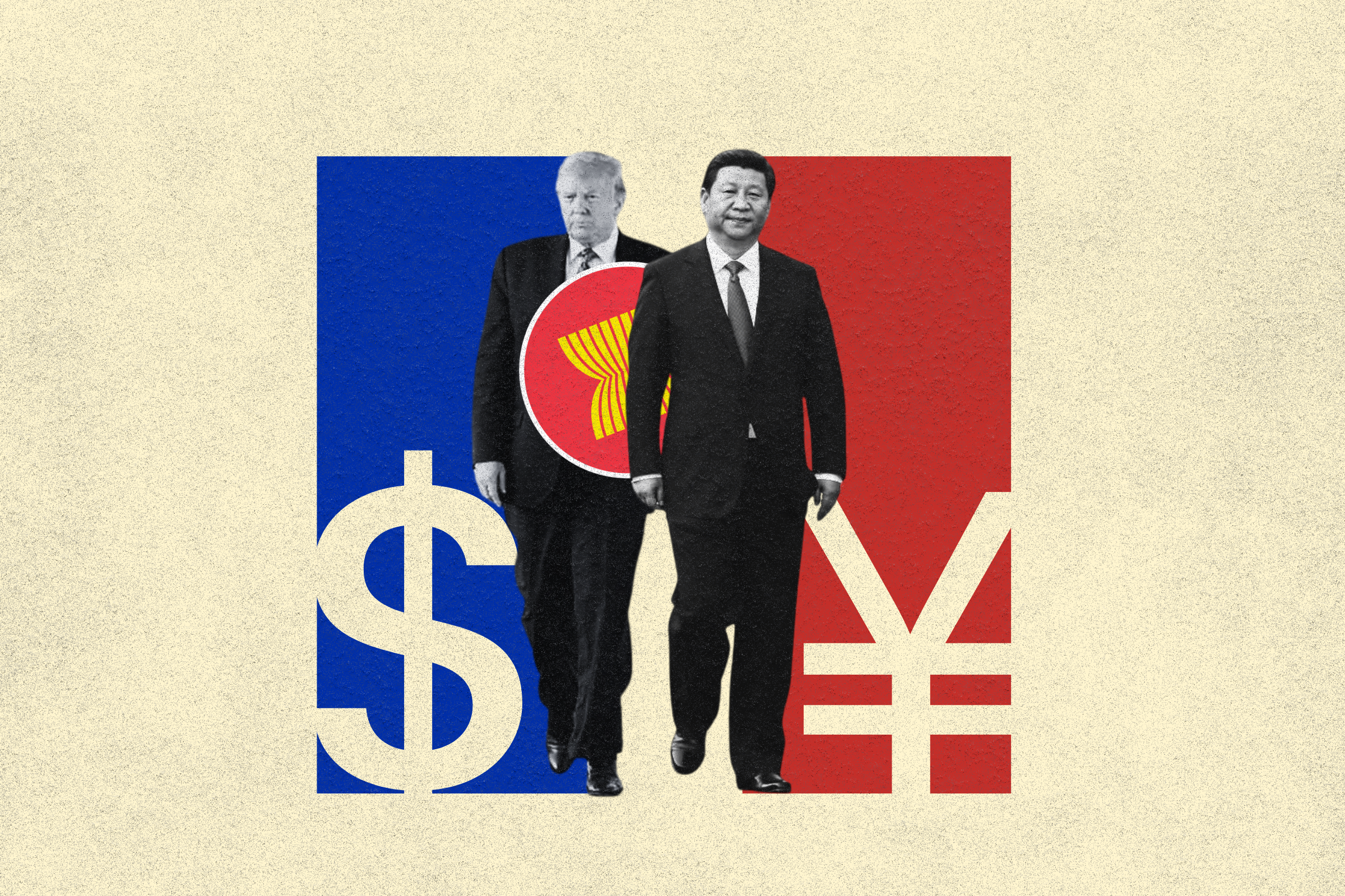
The collapse of the Soviet Union in 1991 marked the end of the Cold War, a decades-long geopolitical rivalry between two superpowers that extended across military, technology, space, and economic domains. Now, more than three decades later, the world appears to be witnessing history repeat itself. Rising geopolitical frictions and escalating trade tensions, particularly during the Trump administration, have reignited fears of a “new Cold War” this time between the United States and China. The focus is largely on China, whose rapid rise has alarmed both Asia and the West.
China is often accused of challenging the Western global order, and has faced numerous allegations against Beijing, including intellectual property theft, cyber espionage, and unfair trade practices. Over the years, the strategic and economic competition between the two powers has intensified. During the administration of US President Donald Trump (2017–2021), economic policy was heavily oriented toward revitalizing domestic manufacturing and employment. The imposition of tariffs on Chinese imports was intended to reduce the trade deficit, incentivize consumption of American-made products, and encourage the reshoring of industries. Trump repeatedly asserted that the US had been “cheated” and “pillaged” by foreign competitors, framing his trade policy as a corrective measure to decades of perceived economic exploitation by China and other trading partners.
In April 2025, in response to the US imposition of a 34% reciprocal tariff on Chinese imports, the Chinese Ministry of Finance announced that it would implement an equivalent of 34% tariff on all goods originating from the US. Subsequently, it is followed by the US increasing the tariff to 145%; similarly, this has been met by Chinese retaliatory tariffs on American goods of 125%. The rapid increase and partial reduction of tariffs throughout April contributed to considerable market turbulence. The reciprocal tariffs eventually led to a temporary cessation of hostilities in May 2025. Although tariff rates were subsequently lowered in May, the trade dynamic between the US and China remains fragile. While this period did not mark the lowest point in bilateral relations, it nevertheless aggravated significant uncertainty within global supply chains and underscored the vulnerability of international trade to political and economic confrontation.
In October, China introduced a new round of export restrictions on rare earth metals, just ahead of a scheduled meeting between Trump and XI Jinping. The latest measures added five critical metals: holmium, erbium, thulium, europium, and ytterbium to the restricted list, all of which are vital for the defence and semiconductor industries. This was followed by earlier restrictions on seven minerals: samarium, gadolinium, terbium, dysprosium, lutetium, scandium, and yttrium. Under the updated regulations, foreign companies must now obtain special approval from Beijing to export rare earth magnets and semiconductor materials containing at least 0.1% heavy rare earth elements. Given the central role these metals play in US defence technologies, semiconductor production, and emerging artificial intelligence (AI) applications, China’s export restrictions struck at a strategically sensitive juncture. The move exacerbated pressures on the US economy at a time when global investments were increasingly pivoting toward defense and AI sectors, posing a direct challenge to President Trump’s “Make America Great Again” agenda and potentially undermining U.S. competitiveness in high-tech industries.
Analysts predict that as Beijing’s influence continues to expand, an increasing number of countries may gradually reduce their dependence on the US and turn toward China for economic and development support. Chinese Foreign Ministry spokesperson Lin Jian urged Washington to respect established international trade norms and rectify its policy approach, cautioning against actions that could undermine China’s national interests. Observers such as Lau Siu Kai (2025) argue that the United States has grown increasingly reluctant to participate in or comply with the very international systems and regulatory frameworks it once championed, particularly in areas of trade, investment, military engagement, and international law. This perceived retreat has contributed to mounting global instability and inequity. Speaking in Beijing in May 2025 before Latin American and Caribbean official’s including the presidents of Brazil, Colombia, and Chile, President Xi Jinping reiterated that “there are no winners in tariff or trade wars. Bullying and hegemonism only lead to self-isolation.” His remarks highlighted China’s effort to position itself as a defender of multilateralism and a proponent of open, rules-based global trade.
During the 1997 Asian Financial Crisis, China assumed a stabilizing role at a time when several major regional economies, such as Thailand, the Philippines, Malaysia, and Indonesia, were facing severe economic downturns. This phase enabled China to strengthen political and economic ties with affected countries, gradually expanding its sphere of influence across Southeast Asia. The crisis thus marked a turning point in China’s regional and global image, consolidating its position as a pivotal actor in the emerging post-Cold War international system.
In the contemporary context, China continues to leverage economic connectivity to reinforce its regional presence. For instance, the state-owned China Ocean Shipping Company (COSCO) recently launched a direct shipping route between Batam, Indonesia, and Yangpu, Hainan, enhancing trade links, diversifying supply chains, and boosting Batam’s role amid US-China tensions. By reducing transit times, lowering logistics costs, and diminishing dependence on U.S.-influenced maritime routes, the route aligns with Beijing’s broader objective of deepening economic integration with Southeast Asia and consolidating its influence within regional trade networks, as well as addressing the Strait of Malacca dilemma.
In recent years, China has consolidated its position as ASEAN’s largest trading partner, with bilateral trade surpassing USD 790 billion in the first ten months of 2024. Beyond trade, Beijing has become a major source of investment in regional infrastructure, spanning sectors such as ports, railways, and telecommunications. China now accounts for approximately 20% of Southeast Asia’s exports and 26% of its imports, outperforming the US, which represents only about 16% in both categories. This disparity is particularly pronounced in countries such as Cambodia, Laos, and Myanmar, where Chinese economic influence far exceeds that of Washington.
President Xi Jinping’s recent tour of Southeast Asia underscores Beijing’s strategic intent to deepen long-term partnerships across the region, particularly amid the intensifying US-China geopolitical rivalry. This diplomatic engagement reflects China’s broader effort to consolidate its economic and political foothold in the face of mounting pressure from the US. Moreover, Washington’s tariff-centric trade policies may inadvertently accelerate ASEAN’s economic realignment toward China, reinforcing Beijing’s central role in shaping the regional economic architecture.
The WTO Chief has urged both the US and China to de-escalate trade tensions, warning that potential decoupling between the world’s two largest economies could reduce global economic output by as much as 7% in the long term. Against this backdrop, US and Chinese officials are set to hold high-level talks in Malaysia aimed at preventing further escalation of trade tensions and restoring a degree of economic stability. Although the future scope and nature of tariffs remain uncertain, it is evident that US tariffs on countries such as South Korea, Vietnam, China, and India may prompt these countries to seek alternative, cost-effective strategies. While such adjustments cannot occur overnight, they are likely to encourage closer cooperation among these countries, strengthening bilateral relations and gradually reducing their dependence on the US.
Ultimately, the outcome of the evolving US-China trade dynamics remains uncertain, but carries profound implications for both national economies and the broader international order. China, despite its expanding global influence, faces mounting domestic economic challenges, including a deepening property sector crisis, persistent deflation, and slowing growth, all of which may constrain its ability to sustain large-scale strategic initiatives. Simultaneously, the underperformance of the Belt and Road underlines the limitations of economic diplomacy as a tool for expanding regional influence. As Beijing seeks to counterbalance the US hegemony in Southeast Asia, its success will hinge largely on its ability to mobilise financial resources effectively, manage internal vulnerabilities, and navigate an increasingly complex and shifting geopolitical landscape.








